
 Larry Fisher
The Hockey Writers
Larry Fisher
The Hockey Writers
42
Reads
0
Comments
2020 NHL Draft: First Round Mock Scenarios 4.1
This series, which started with top 10 scenarios, has expanded to the top 31 — to first round scenarios for the 2020 NHL Draft — by extending those 10 initial mocks, using the same results for the top 10 from running the Tankathon simulator for the draft lottery.
The debut edition elaborated on all the details and I’ve explained the rationale for the remainder of the draft order. I’ll be providing analysis for every new selection while linking repetitive picks back to their original mock for reference. I’ll try to keep it as fresh as possible and mix in some surprises — along with additional insight — but might shorten the analysis at times to ensure these mocks are published weekly (or as frequently as possible).
Without further ado, here is a recap of the top 10 from mock 4.0 followed by selections 11-31 for mock 4.1:
1) Ottawa Senators (San Jose) — Alexis Lafreniere (LW, Canada, Rimouski QMJHL)
2) Ottawa Senators — Quinton Byfield (LC, Canada, Sudbury OHL)
3) Buffalo Sabres — Tim Stutzle (LC/LW, Germany, Adler Mannheim DEL)
4) Detroit Red Wings — Lucas Raymond (RW, Sweden, Frolunda SHL)
5) Los Angeles Kings — Jamie Drysdale (RD, Canada, Erie OHL)
6) Anaheim Ducks — Alexander Holtz (LW/RW, Sweden, Djurgardens SHL)
7) New Jersey Devils — Marco Rossi (LC, Austria/Switzerland, Ottawa OHL)
8) Montreal Canadiens — Cole Perfetti (LW/LC, Canada, Saginaw OHL)
9) Chicago Blackhawks — Jake Sanderson (LD, USA, NTDP U18)
10) New Jersey Devils (via Arizona) — Jack Quinn (RW, Canada, Ottawa OHL)
11) Minnesota Wild — Anton Lundell (LC, Finland, HIFK Liiga)

ANALYSIS: Minnesota takes Lundell for a second time, seeing him as the second coming of Mikko Koivu — as was the case in mock 1.1. If Lundell slides out of the top 10 — and that is still a big if — it is unlikely he’ll make it past Minnesota. Koivu, from his prime, is a quality comparable, but Lundell could reach an even higher level as a poor man’s Aleksander Barkov. For a non-Finnish comparable, Lundell also reminds some scouts of Sean Couturier based on his two-way prowess and evolving offensive tools that could elevate Lundell into a top-line role for the Wild. That upside is debatable, but Lundell has a high floor as a middle-six centre and is arguably the second-most NHL-ready prospect in this draft class — behind only Lafreniere but ahead of Byfield and Stutzle, among others. Still, the smart play would be to leave Lundell in Finland for another year to grow his offensive game despite the fact he appears more polished than Kaapo Kakko was this season or Jesperi Kotkaniemi the year before as fellow Finns who were taken in the top three. Minnesota’s decision is between Lundell and Russian goaltender Yaroslav Askarov, who the Wild have passed on in two straight scenarios after he twice went in the top 10.
12) Winnipeg Jets — Connor Zary (LC, Canada, Kamloops WHL)
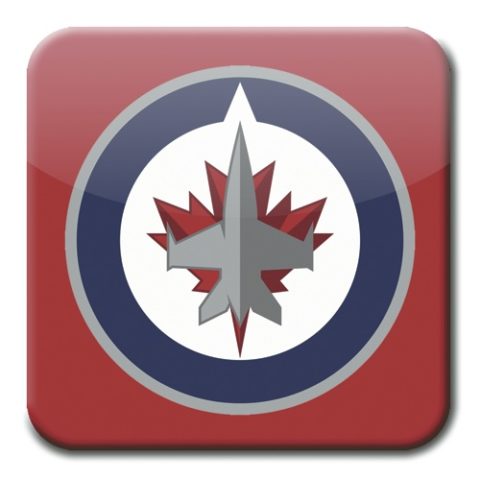
ANALYSIS: Winnipeg takes Zary as their future second-line centre, with the potential to be better than Bryan Little, who was also taken at this spot — 12th in 2006, when the franchise was still in Atlanta. Zary is somewhat similar in his playing style and should be good for 50-plus points throughout his prime. Little is signed for four more seasons through 2024, but there is uncertainty surrounding his return for health reasons and Cody Eakin was acquired to plug that hole in the present, so Zary could seize an opportunity with the Jets in the coming years. Zary is an older prospect for this draft class and might be able to make the jump following next season, providing he continues to round out his overall game. Winnipeg likes their WHL prospects and might prefer Zary over Dylan Holloway, who went to the Jets in mock 3.1.
13) New York Rangers — Jan Mysak (LW, Czech Republic, Hamilton OHL)
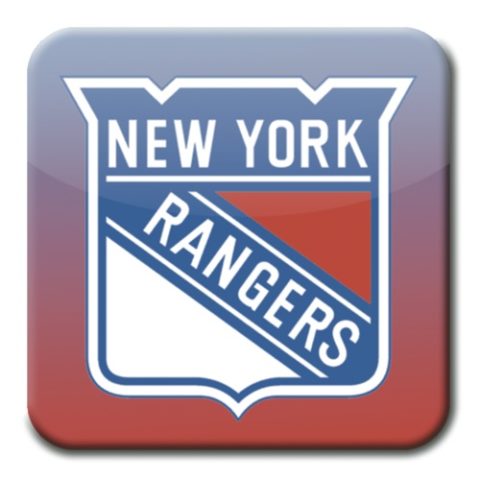
ANALYSIS: The Rangers take Mysak as a repeat pick from mock 1.1 when he fell to them at 23rd overall. This time, Mysak is their primary target at 13th as a Czech wingman for Filip Chytil. Mysak is more of a finisher and Chytil could be the perfect playmaker for him, so the Rangers shouldn’t risk passing up that dynamic duo in anticipation of Mysak still being available at 23rd, which wasn’t the case in mock 2.1 or mock 3.1. If the Rangers really want Mysak, they probably need to take him here.
14) Florida Panthers — Braden Schneider (RD, Canada, Brandon WHL)
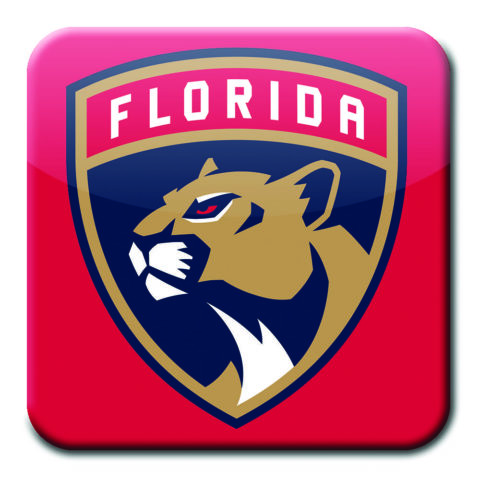
ANALYSIS: Florida opts for the other WHL defender in Schneider, having previously taken Kaiden Guhle in mock 3.1. Both could be on the Panthers’ radar if they are planning to address their defence in this year’s first round. Schneider might be deemed more of a need since he is right-handed and that is an organizational weakness in terms of the prospect pool. Schneider is also considered closer to NHL ready than Guhle and could be slotting behind Aaron Ekblad within a couple years whereas Guhle will likely take a few to develop into a top-four role. Schneider would be what the Panthers thought they were getting in Mark Pysyk, as more of a shutdown type and a physical presence with a good amount of meanness to his game. There isn’t much offensive upside with Schneider, who most resembles Travis Hamonic as a comparable, but he’ll be a solid contributor for a decade.
15) Columbus Blue Jackets — Hendrix Lapierre (LC, Canada, Chicoutimi QMJHL)
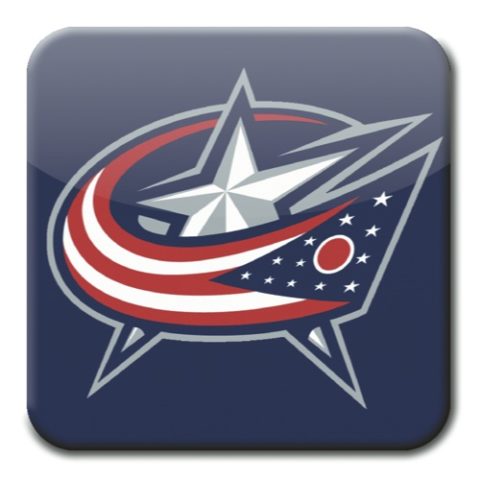
ANALYSIS: Columbus needs more high-end skill and Lapierre would be an ideal complement to Pierre-Luc Dubois down the middle. The Blue Jackets have endured all kinds of injury issues in recent years, so they might be reluctant to take a chance on Lapierre with his concussion concerns, but there are now reports his neck was more so the problem. Regardless, Lapierre missed most of his draft year after starring at the Hlinka Gretzky Cup last summer and getting labelled as a top-10 talent for 2020. His stock has dropped, but time will tell how far he’ll fall. Columbus could certainly be tempted by Lapierre’s upside and the potential to form a 1-2 punch with Dubois.
16) Calgary Flames — Dylan Holloway (LC, Canada, Wisconsin NCAA)
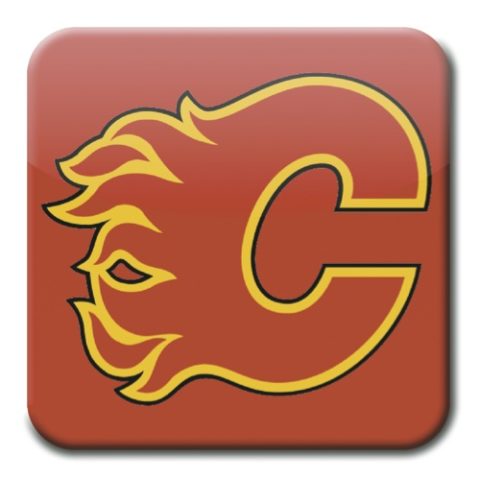
ANALYSIS: Calgary takes another hometown boy in Holloway, who hails from Cowtown and developed in the Flames’ backyard with AJHL Okotoks before heading to Wisconsin for his draft year. Dillon Dube and Matthew Phillips are also local products drafted by the Flames. Holloway’s game has similarities to Sean Monahan and Sam Bennett, but he is different enough to still become a valuable commodity for Calgary. Holloway wouldn’t be redundant and would presumably work well with Matthew Tkachuk — perhaps being a better fit than Zary, who the Flames took in mock 1.1.
17) Vancouver Canucks — Noel Gunler (RW/LW, Sweden, Lulea SHL)

ANALYSIS: Vancouver takes Gunler as a no-brainer, with no chance he gets past the Canucks, who would be loving the potential of an all-Swedish line with Elias Pettersson and Nils Hoglander. That trio would be lustworthy as in wickedly potent and wildly fun to watch, with Gunler being one of the best pure snipers in this draft class. Gunler may be a boom-or-bust prospect but getting him here would be another massive boon for the Canucks.
18) Nashville Predators — Lukas Cormier (LD, Canada, Charlottetown QMJHL)

ANALYSIS: Nashville takes a new name in Cormier, who didn’t go in the first round through the previous three scenarios and now suddenly cracks the top 20. That may seem surprising and suggests this is a reach, but it just goes to show the closeness of that 20-50 tier, so Cormier shouldn’t be counted out. He is absolutely in the mix for the top 31 and Nashville could be the team to take him. Cormier is a clone of Colorado’s Samuel Girard, who was originally drafted by Nashville as a second-rounder out of the QMJHL in 2016. The Predators have stockpiled plenty of similar prospects — Hobey Baker finalist David Farrance, Marc Del Gaizo and Spencer Stastney being among them, along with AHLers Jeremy Davies and Alexandre Carrier, who is another QMJHL alum — but Cormier could still be higher on Nashville’s list than some of the other defenders available here such as Kaiden Guhle, Justin Barron and Helge Grans, whom many have ranked ahead of Cormier. If Nashville opts to further bolster their blue line, they’ll likely go with one of those four at this spot, having already taken Barron in mock 1.1.
19) Carolina Hurricanes (Toronto) — Jacob Perreault (RW/RC, Canada/USA, Sarnia OHL)

ANALYSIS: Carolina will be very familiar with Perreault from tracking the progress of his teammate Jamieson Rees, who the Hurricanes took in the second round last year. Perreault has similarities to Rees in his offensive skill-set but doesn’t play at the same pace despite producing as impressively. Rees is a relentless catalyst — with a high-octane motor, always in fifth gear — but Perreault is the more gifted scorer between them, picking his spots and possessing a better shot. Perreault has the higher ceiling and should be a first-rounder, with Carolina being among his potential suitors.
20) Edmonton Oilers — Tyson Foerster (RW, Canada, Barrie OHL)
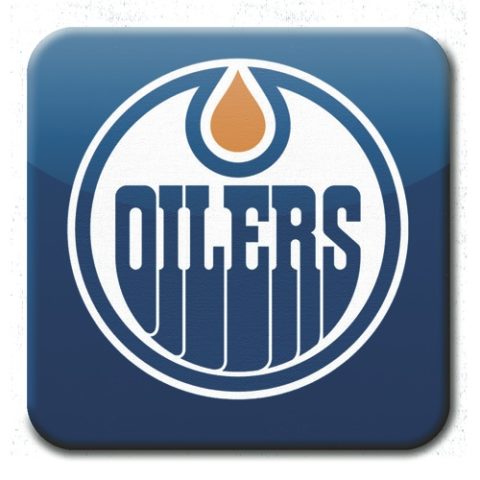
ANALYSIS: Edmonton would have a hard time passing on Askarov as the draft’s top goaltender — having taken another Russian netminder, Ilya Konovalov, in the third round last year — but Foerster fits the bill as a scoring winger, which is more of a priority for the Oilers. Edmonton has been drafting well out of the OHL in recent years — particularly during the Peter Chiarelli era — so Foerster could be a prime target, along with Jack Quinn from mock 2.1. Foerster’s stock is rising after thriving as the go-to guy for Barrie in the second half, so this wouldn’t be seen as much of a reach in addressing an organizational need for more forwards who can finish off the chances created by Connor McDavid and Leon Draisaitl. Foerster is a shoot-first winger, which is exactly what Edmonton will be wanting here.
21) Ottawa Senators (N.Y. Islanders) — Yaroslav Askarov (G, Russia, SKA-Neva St. Petersburg VHL)
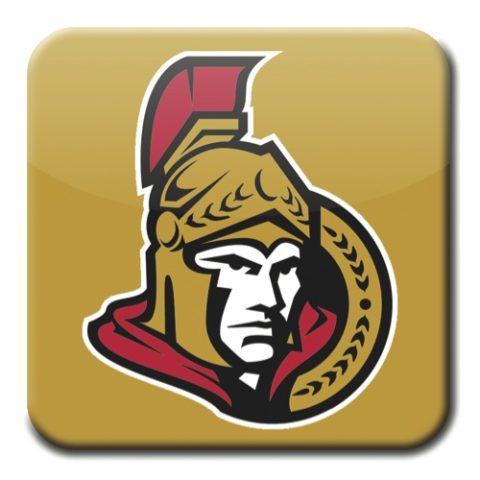
ANALYSIS: The Senators would be stunned to see Askarov still available, with Pierre Dorion and the fan base in disbelief over this dream scenario. Landing both Lafreniere and Byfield in the lottery would be amazing enough, but having Askarov land in their lap is truly the cherry on top. That would be the epitome of having their cake and eating it too, with those three selections surely bailing out Eugene Melnyk and restoring the Senators to prominence. Ottawa would have the makings of a dynasty, with Askarov backstopping them to at least one Stanley Cup in the not-too-distant future. Askarov is considered the best goaltending prospect to come through the draft since Carey Price went fifth overall in 2005 and his ceiling is even higher than Andrei Vasilevskiy, among the other Russian netminders taking the NHL by storm. Askarov could be a top-10 pick, but he is one of the real wild cards of the first round, so this scenario isn’t totally farfetched.
22) Dallas Stars — Rodion Amirov (LW, Russia, Salavat Yulaev Ufa KHL)
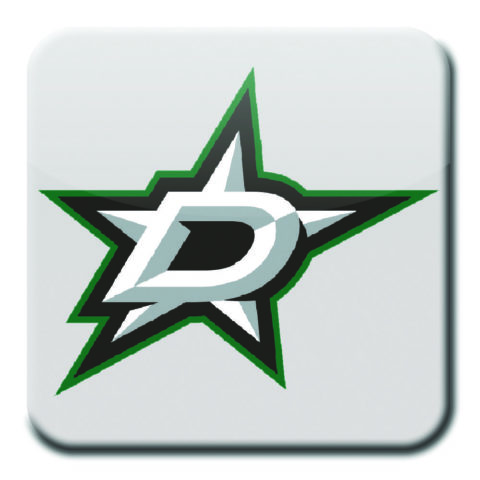
ANALYSIS: Dallas hasn’t shied away from Russian forwards in the first round — taking Denis Gurianov at 12th in 2015 and Valeri Nichushkin at 10th in 2013 — so Amirov could be on the Stars’ radar. He could be a steal here, with Amirov possessing top-15 talent, but the Russian factor often causes legitimate prospects to slip and fall — at least to some degree. That would apply in this scenario, with Amirov still on the board outside the top 20 through no fault of his own. Amirov is a talented winger who can be a driver on offence and isn’t a liability on defence. He plays a 200-foot game but does his best work off the rush and around the net as a puck hound with above-average finishing ability. Dallas could thank their lucky stars for getting Amirov this late.
23) New York Rangers (Carolina) — Martin Chromiak (LW, Slovakia, Kingston OHL)

ANALYSIS: The Rangers take another relatively new import to the OHL in Chromiak, who is one of the youngest prospects in this draft class and may be just scratching the surface of his offensive potential. Chromiak’s ceiling could be as high as David Pastrnak and the Rangers can swing for the fences with their second selection in hopes of hitting a home run. Chromiak and Mysak both debuted in North America following the World Juniors — Mysak was on display there for the host Czechs, while Chromiak was snubbed by Slovakia — so they are good bets to break out next season after already making an immediate impact upon their arrival in the OHL. They flashed first-round talent down the stretch, showing more than enough upside to be taken in the top 31. The Rangers would be fortunate to get them both in this scenario, with the reward far outweighing the risk when it comes to Chromiak. The Rangers hit a grand slam with Gunler and Mysak in mock 1.1, but Mysak and Chromiak would also be worthy of a walk-off and reason for celebration.
24) Pittsburgh Penguins — Justin Barron (RD, Canada, Halifax QMJHL)

ANALYSIS: Pittsburgh takes Barron, believing he can become Kris Letang’s successor as their main source of offence from the back end. Like Letang, Barron’s defence is underrated and overshadowed by his offensive contributions. Barron is effective at both ends and should be able to play in all situations as a pro. The Penguins are piecing together their future blue line — acquiring Marcus Pettersson, John Marino and Pierre-Olivier Joseph — and drafting Barron in the first round could turn that perceived weakness into a strength for the years to come.
25) Philadelphia Flyers — Seth Jarvis (RW, Canada, Portland WHL)
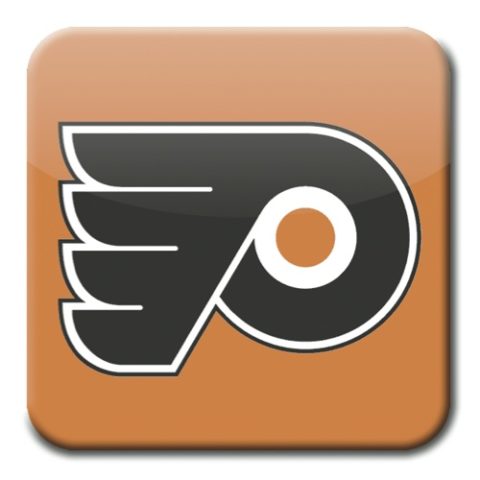
ANALYSIS: Philadelphia isn’t afraid to take undersized forwards like Jarvis in the early rounds, with Travis Konecny, Joel Farabee, Morgan Frost, Jay O’Brien and Bobby Brink all being sub six feet — and all taken in the top 35, with the first four being first-rounders. Claude Giroux is also under six-feet tall, believe it or not, and started that trend as the 22nd overall pick for Philly back in 2006. The Flyers would overlook Jarvis’ height — listed at 5-foot-10 — and see his skill level above all else. Jarvis’ stock should be soaring after racking up 75 points over his final 37 games — he only had 23 points through his first 21 games — so Jarvis could be long gone by here, but Philadelphia wouldn’t let him slide any further.
26) Colorado Avalanche — Dawson Mercer (RW, Canada, Chicoutimi QMJHL)
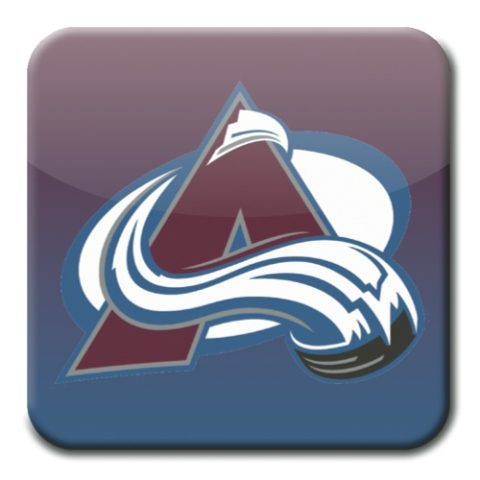
ANALYSIS: Colorado has taken a few swings thus far — on Chromiak, Lapierre and Barron — but plays it safer in this scenario by taking Mercer as their best player available. The Avs have assembled an enviable prospect pool and Mercer would be another nice addition — in a subtle sense, similar to Shane Bowers, who was taken 28th by Ottawa in 2017. J.T. Compher is cut from that cloth too, as the 35th overall pick for Buffalo in 2013. Colorado could comprise one of the league’s premier third lines by putting those three together. Mercer is a versatile forward who is good at everything but not necessarily great at anything. He has top-six upside but projects as a complementary piece, though still the type of player that teams need to win championships. And the Avs are trending towards hoisting the Cup again.
27) San Jose Sharks (Tampa Bay) — Kaiden Guhle (LD, Canada, Prince Albert WHL)
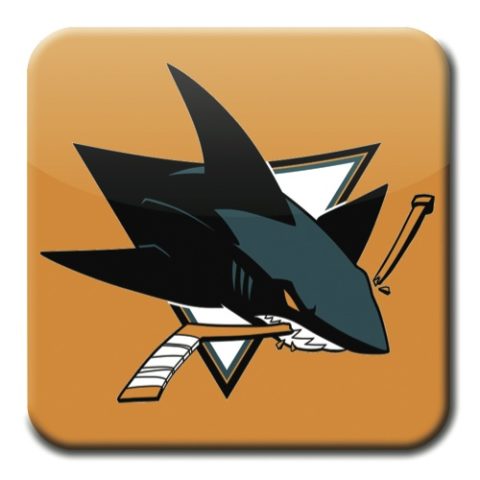
ANALYSIS: San Jose is shocked to see Guhle still lingering, also taking the BPA approach here — that being, best player available. The Sharks could be circling a couple of German forwards in J.J. Peterka and Lukas Reichel, who they took in mock 3.1, but Guhle would be too good to pass up at this spot. Doug Wilson would likely have Guhle in the top 20 on San Jose’s list, with the potential to replace Marc-Edouard Vlasic’s presence in the Sharks’ lineup. Guhle is that kind of all-around defender who will probably take on more of a shutdown role as a pro, with his offensive contributions becoming secondary. Ryan Murray could be another comparable, but Guhle is more physical than him and thus closer to Vlasic in terms of overall impact. Guhle would be a great get for San Jose at this stage of the first round.
28) Vegas Golden Knights — Luke Tuch (LW, USA, NTDP U18)
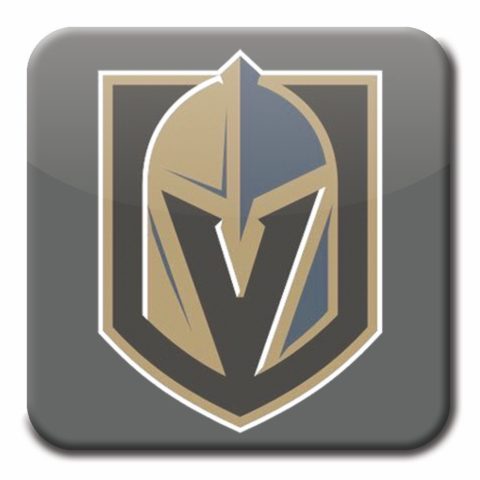
ANALYSIS: Vegas takes a new yet familiar name in Tuch, who is the younger brother of Golden Knights forward Alex Tuch. Alex was also a first-rounder, selected 18th overall in 2014 by Minnesota. Luke plays a similar power-forward game and is growing into much the same frame — listed at 6-foot-2 and 203 pounds to Alex’s 6-4 and 220 as his elder by six years. Both brothers are products of The Program, with Alex putting up bigger and better numbers during his draft year — 1.05 points per game and 0.48 goals to Luke’s 0.64 and 0.32. Alex had the better supporting cast with the likes of Jack Eichel and Dylan Larkin as his centres, but Luke also played a big role that included power-play time in producing a balanced stat-line with 15 goals and 15 assists for 30 points over 47 games. The brothers don’t have everything in common, with Luke bound for Boston University instead of Boston College where Alex spent two years before turning pro. By all accounts, Alex is the better brother, but Vegas could take a liking to Luke as a chip off the same block in also coveting Alex’s character and intangibles.
29) Washington Capitals — Ridly Greig (LC/LW, Canada, Brandon WHL)
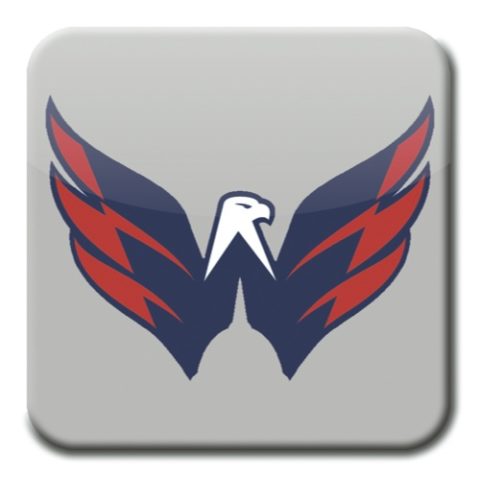
ANALYSIS: Washington has continued to draft quite heavily from the WHL in recent years, so going with Greig wouldn’t be a huge surprise. It also wouldn’t be the first time the Capitals have taken a gritty forward from Brandon in the first round, going back to Eric Fehr in 2003. Fehr went on to a quality career, totalling 722 games with 122 goals, 233 points and 241 penalty minutes as the 18th overall pick in arguably the best draft ever. That included nine seasons in the Capitals’ organization — spanning a decade — which would be a successful tenure by any measure, even though Fehr topped out at 21 goals and 39 points as career highs while getting selected between Zach Parise (17th) and Ryan Getzlaf (19th). Greig may have more offensive upside — much of it still untapped — but he’ll likely settle into a middle-six role similar to Fehr. Greig does have more nasty in his game — a bit of Brad Marchand as an antagonist — and that would be welcomed in Washington, which is currently home to Tom Wilson and Radko Gudas.
30) St. Louis Blues — Carter Savoie (LW, Canada, Sherwood Park AJHL)
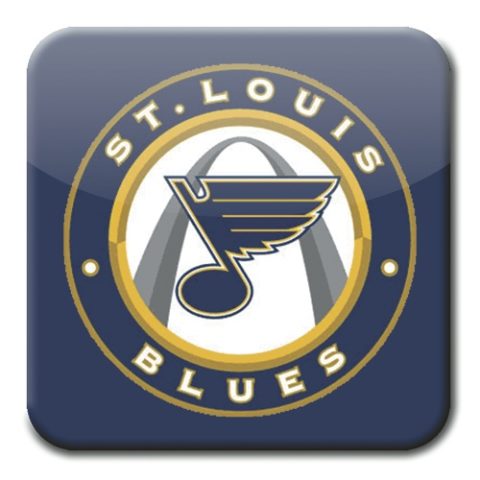
ANALYSIS: St. Louis could have eyes for Savoie, a high-scoring forward from a tier-two junior league reminiscent of Jaden Schwartz, who the Blues took 14th overall in 2010. There are several similarities between Savoie and Schwartz, ranging from their size — both listed at 5-foot-10 — to their attacking styles and strengths as opportunistic scorers. They know how to be in the right places at the right times — and how to finish. Even their stats were nearly identical at the same level in the season prior to their draft years when Savoie netted 31 goals and 73 points over 58 games in the AJHL to Schwartz’s 34 goals and 76 points in 46 games with the SJHL’s Notre Dame Hounds. Savoie flirted with the 100-point plateau and goal-a-game status this season, finishing with 99 points and 53 goals in 54 games as a sophomore for Sherwood Park, while Schwartz moved on to dominate the USHL during his draft year — leading that league with 83 points, including 33 goals, over 60 games en route to becoming a first-rounder for the Blues. Savoie’s production certainly warrants consideration in the top 31.
31) Anaheim Ducks (Boston) — Helge Grans (RD, Sweden, Malmo J20)

ANALYSIS: Anaheim wouldn’t let Grans get out of the first round, with general manager Bob Murray reportedly scouting him in person and perhaps targeting him for the Ducks. Anaheim has already taken two Swedish defencemen in the first round under Murray’s watch — Hampus Lindholm at sixth overall in 2012 and Jacob Larsson at 27th in 2015. Grans is essentially the same size as them, listed at 6-foot-3 and 192 pounds to Lindholm’s 6-3 and 208 as well as Larsson’s 6-2 and 190. Grans’ ceiling is somewhere between those two but might be closer to Lindholm with comparable skating and respectable offensive tools. Statistically, Grans had a superior draft year to Lindholm — recording four goals and 27 points in 27 games at the junior level to Lindholm’s five goals and 17 points in 28 games. At the pro level, Lindholm had one goal and four points in 20 second-tier Allsvenskan games, while Grans managed one goal and three points in 21 top-tier SHL games. It makes you wonder whether Murray might have been watching Grans more so for Anaheim’s top-10 pick rather than this late-round selection, but the Ducks already took a Swedish stud at sixth overall in sniper Alexander Holtz. Regardless, Grans could be a steal here to round out the top 31 in this scenario.
Recapping Results for Mock 4.1
1) Ottawa Senators (San Jose) — Alexis Lafreniere (LW, Canada, Rimouski QMJHL)
2) Ottawa Senators — Quinton Byfield (LC, Canada, Sudbury OHL)
3) Buffalo Sabres — Tim Stutzle (LC/LW, Germany, Adler Mannheim DEL)
4) Detroit Red Wings — Lucas Raymond (RW, Sweden, Frolunda SHL)
5) Los Angeles Kings — Jamie Drysdale (RD, Canada, Erie OHL)
6) Anaheim Ducks — Alexander Holtz (LW/RW, Sweden, Djurgardens SHL)
7) New Jersey Devils — Marco Rossi (LC, Austria/Switzerland, Ottawa OHL)
8) Montreal Canadiens — Cole Perfetti (LW/LC, Canada, Saginaw OHL)
9) Chicago Blackhawks — Jake Sanderson (LD, USA, NTDP U18)
10) New Jersey Devils (via Arizona) — Jack Quinn (RW, Canada, Ottawa OHL)
11) Minnesota Wild — Anton Lundell (LC, Finland, HIFK Liiga)
12) Winnipeg Jets — Connor Zary (LC, Canada, Kamloops WHL)
13) New York Rangers — Jan Mysak (LW, Czech Republic, Hamilton OHL)
14) Florida Panthers — Braden Schneider (RD, Canada, Brandon WHL)
15) Columbus Blue Jackets — Hendrix Lapierre (LC, Canada, Chicoutimi QMJHL)
16) Calgary Flames — Dylan Holloway (LC, Canada, Wisconsin NCAA)
17) Vancouver Canucks — Noel Gunler (RW/LW, Sweden, Lulea SHL)
18) Nashville Predators — Lukas Cormier (LD, Canada, Charlottetown QMJHL)
19) Carolina Hurricanes (Toronto) — Jacob Perreault (RW/RC, Canada/USA, Sarnia OHL)
20) Edmonton Oilers — Tyson Foerster (RW, Canada, Barrie OHL)
21) Ottawa Senators (N.Y. Islanders) — Yaroslav Askarov (G, Russia, SKA-Neva St. Petersburg VHL)
22) Dallas Stars — Rodion Amirov (LW, Russia, Salavat Yulaev Ufa KHL)
23) New York Rangers (Carolina) — Martin Chromiak (LW, Slovakia, Kingston OHL)
24) Pittsburgh Penguins — Justin Barron (RD, Canada, Halifax QMJHL)
25) Philadelphia Flyers — Seth Jarvis (RW, Canada, Portland WHL)
26) Colorado Avalanche — Dawson Mercer (RW, Canada, Chicoutimi QMJHL)
27) San Jose Sharks (Tampa Bay) — Kaiden Guhle (LD, Canada, Prince Albert WHL)
28) Vegas Golden Knights — Luke Tuch (LW, USA, NTDP U18)
29) Washington Capitals — Ridly Greig (LC/LW, Canada, Brandon WHL)
30) St. Louis Blues — Carter Savoie (LW, Canada, Sherwood Park AJHL)
31) Anaheim Ducks (Boston) — Helge Grans (RD, Sweden, Malmo J20)
- Mock 1.0
- Mock 1.1
- Mock 2.0
- Mock 2.1
- Mock 3.0
- Mock 3.1
- Mock 4.0
- Mock 5.0
- Mock 6.0
- Mock 7.0
- Mock 8.0
- Mock 9.0
- Mock 10
- Reviewing Top 10 for Teams
- Reviewing Top 10 for Prospects
Get the latest NHL Draft & Prospect rankings, news and analysis
The post 2020 NHL Draft: First Round Mock Scenarios 4.1 appeared first on The Hockey Writers.
Popular Articles

















































 Blackhawks Chicago
Blackhawks Chicago Panthers Florida
Panthers Florida Penguins Pittsburgh
Penguins Pittsburgh Rangers New York
Rangers New York Avalanche Colorado
Avalanche Colorado Kings Los Angeles
Kings Los Angeles Maple Leafs Toronto
Maple Leafs Toronto Bruins Boston
Bruins Boston Capitals Washington
Capitals Washington Flames Calgary
Flames Calgary Oilers Edmonton
Oilers Edmonton Golden Knights Vegas
Golden Knights Vegas Senators Ottawa
Senators Ottawa Lightning Tampa Bay
Lightning Tampa Bay Flyers Philadelphia
Flyers Philadelphia Islanders New York
Islanders New York Sabres Buffalo
Sabres Buffalo Red Wings Detroit
Red Wings Detroit Devils New Jersey
Devils New Jersey Hurricanes Carolina
Hurricanes Carolina Blue Jackets Columbus
Blue Jackets Columbus Predators Nashville
Predators Nashville Stars Dallas
Stars Dallas Jets Winnipeg
Jets Winnipeg Wild Minnesota
Wild Minnesota Blues St. Louis
Blues St. Louis Mammoth Utah
Mammoth Utah Sharks San Jose
Sharks San Jose Ducks Anaheim
Ducks Anaheim Canucks Vancouver
Canucks Vancouver


